Abstract
Continuous elevation of the middle finger for 15-60 min gave rise to modulation of the e.m.g. at 4-6 Hz. A marked peak (50-150% of the amplitude of the coexisting 8-12 Hz peak) at 4-6 Hz was produced in sixteen out of twenty-one subjects. The 8-12 Hz peak was also enhanced (2-14 times with respect to its initial amplitude in eighteen subjects) during the course of the prolonged contraction but its frequency did not change. The 4-6 Hz and the 8-12 Hz peaks were present simultaneously; it is concluded that the two phenomena are separate entities. A step-function mechanical perturbation of the finger generates, time-locked to the stimulus, a train of waves at the frequency of the slow tremor, which can be abolished by local ischaemia. It is proposed that this slow tremor is due to an oscillatory process, possibly involving the reflex arc, but entailing a longer neuronal delay than that responsible for 8-12 Hz tremor.
Full text
PDF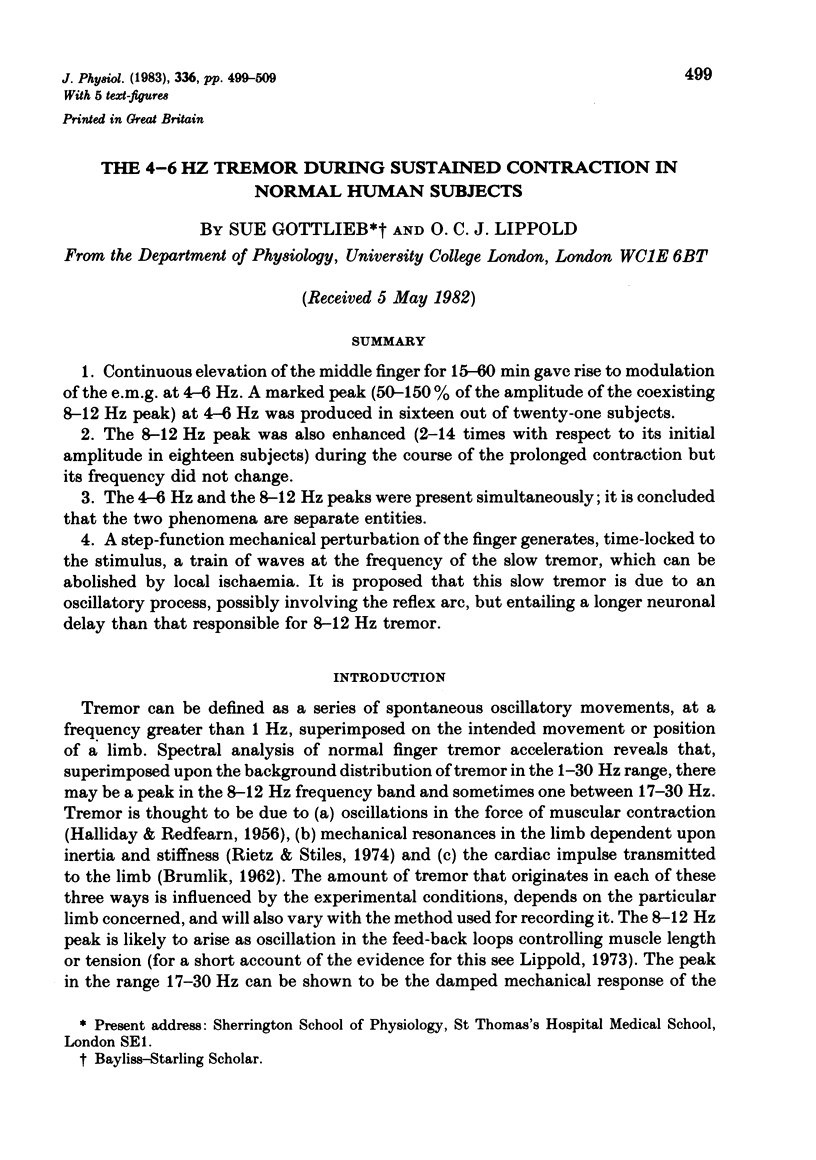
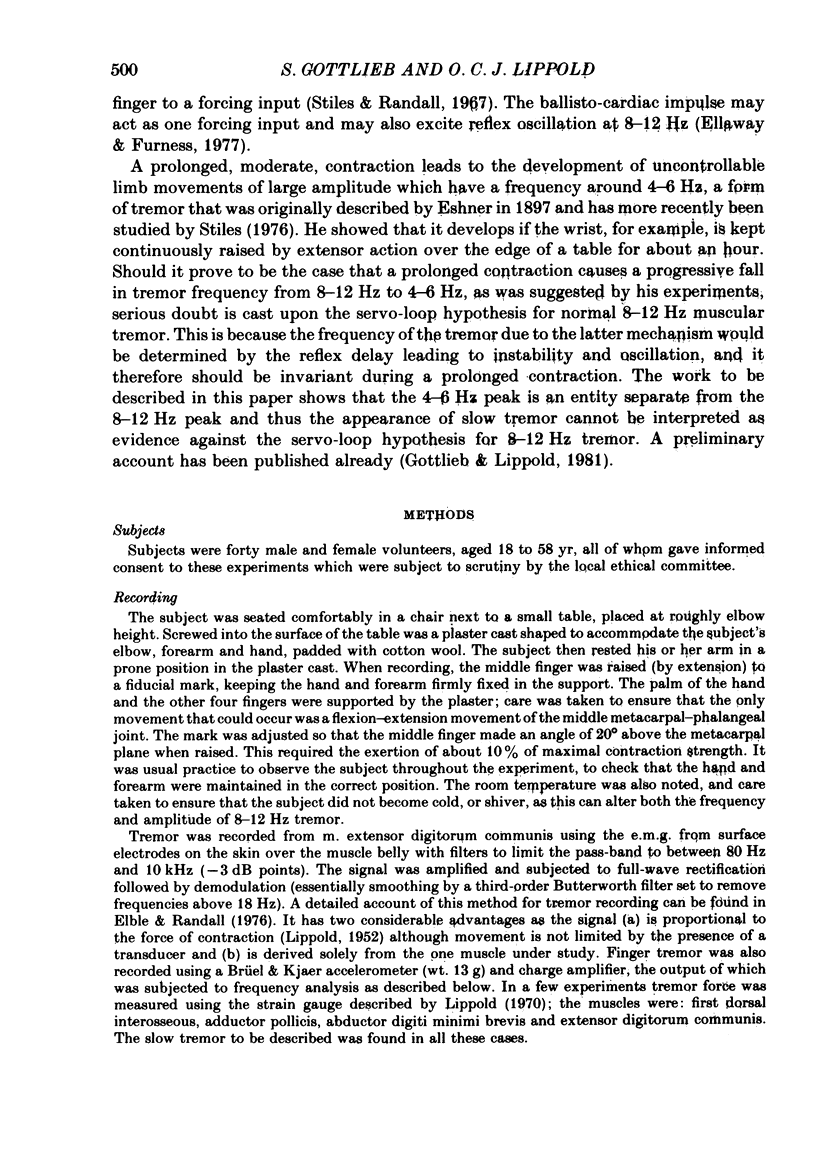
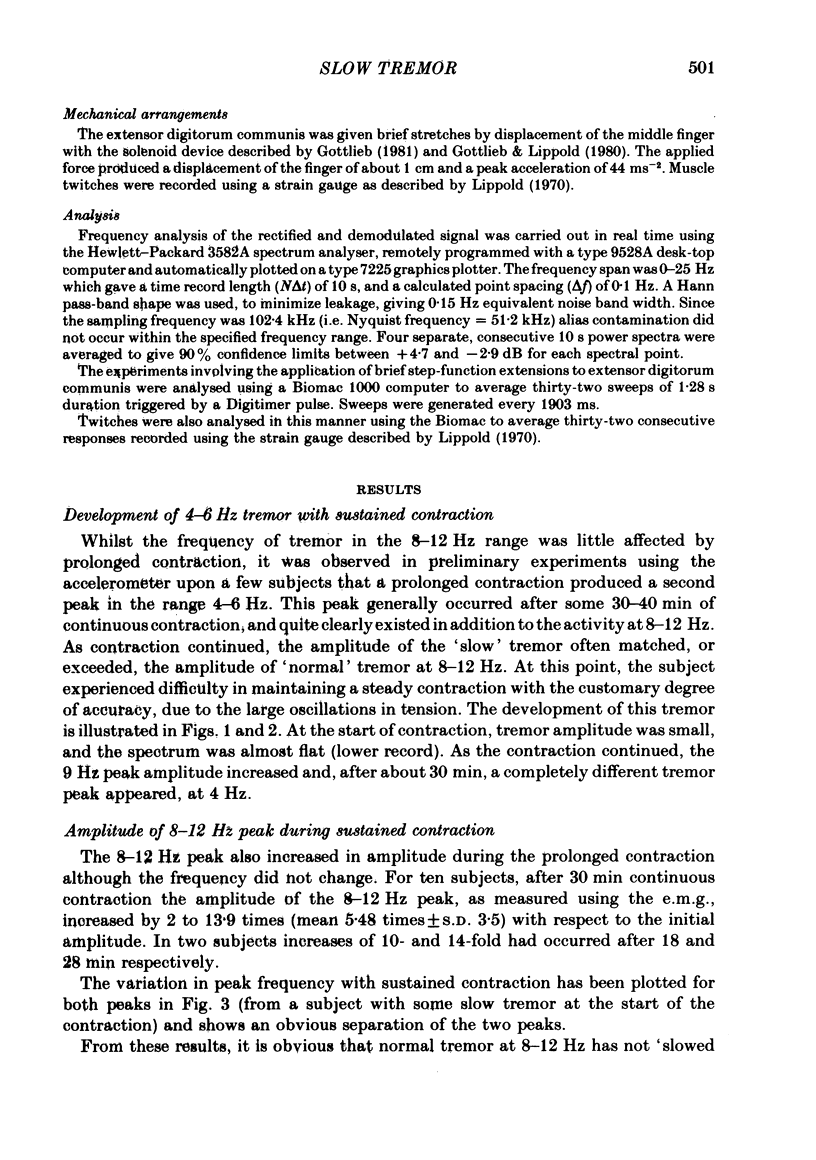
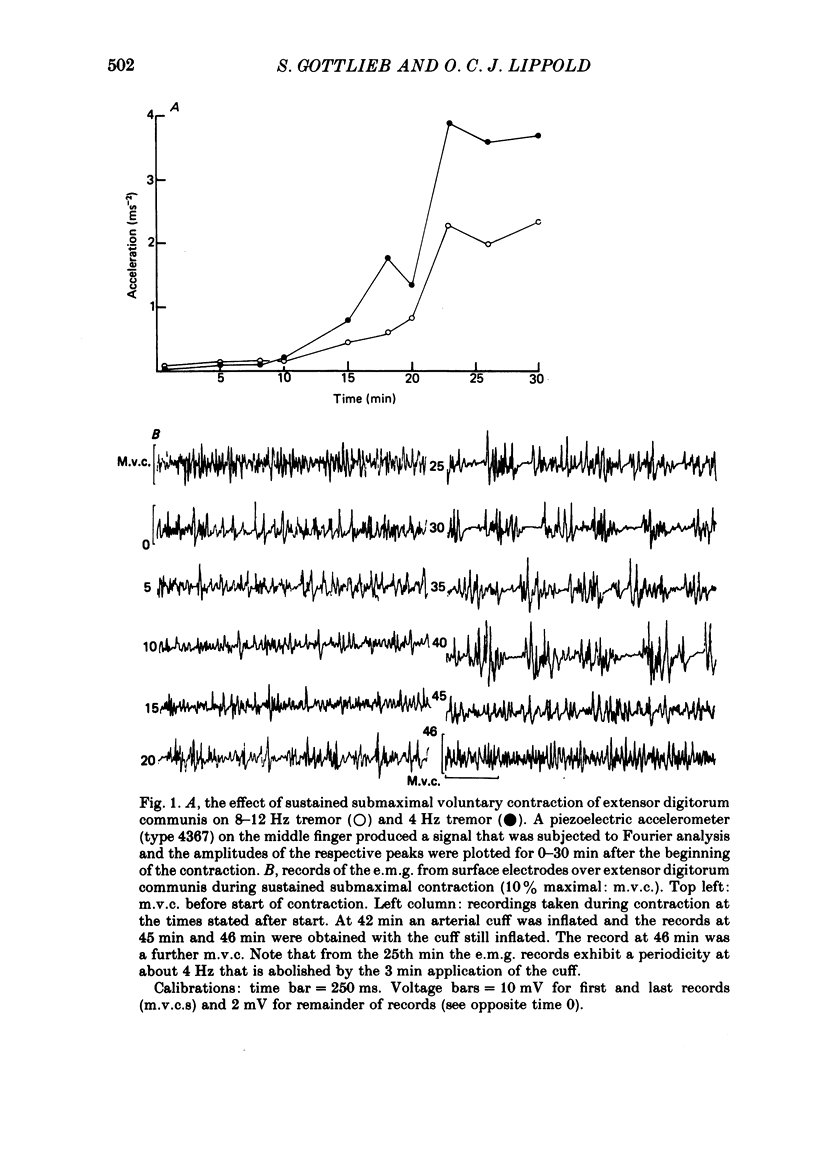
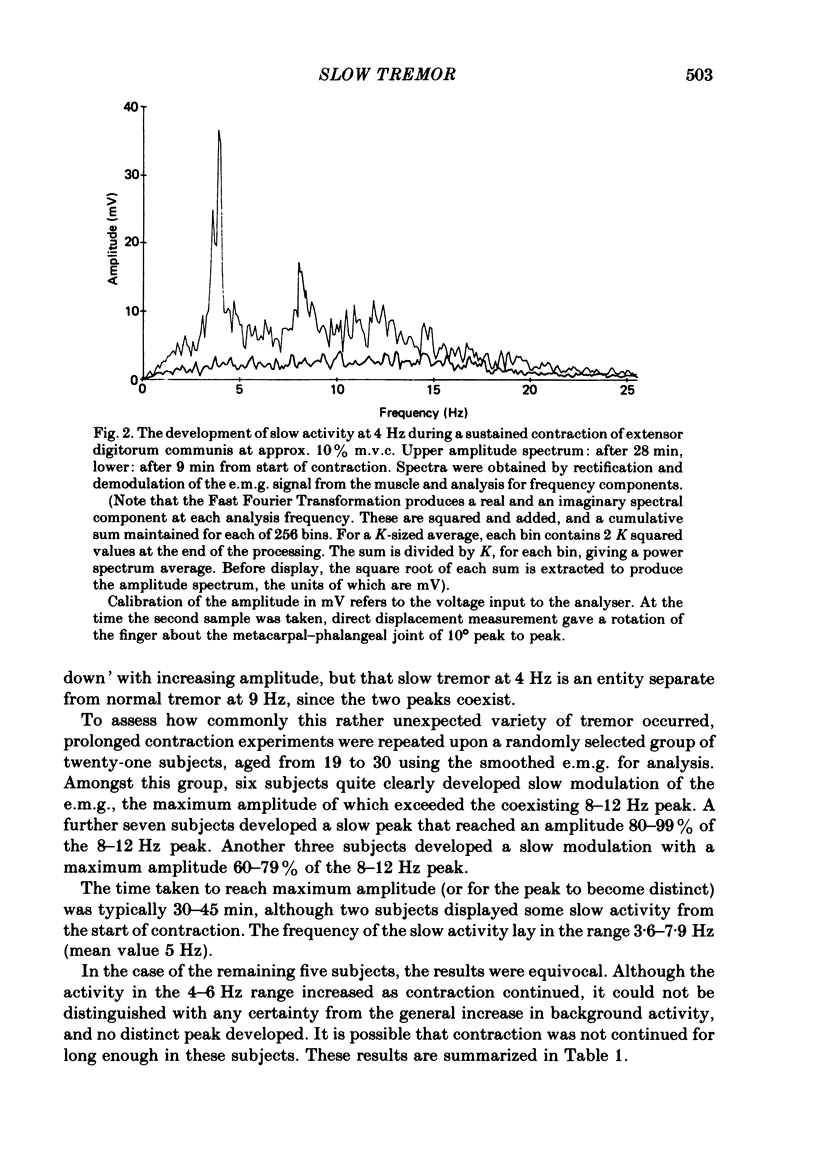
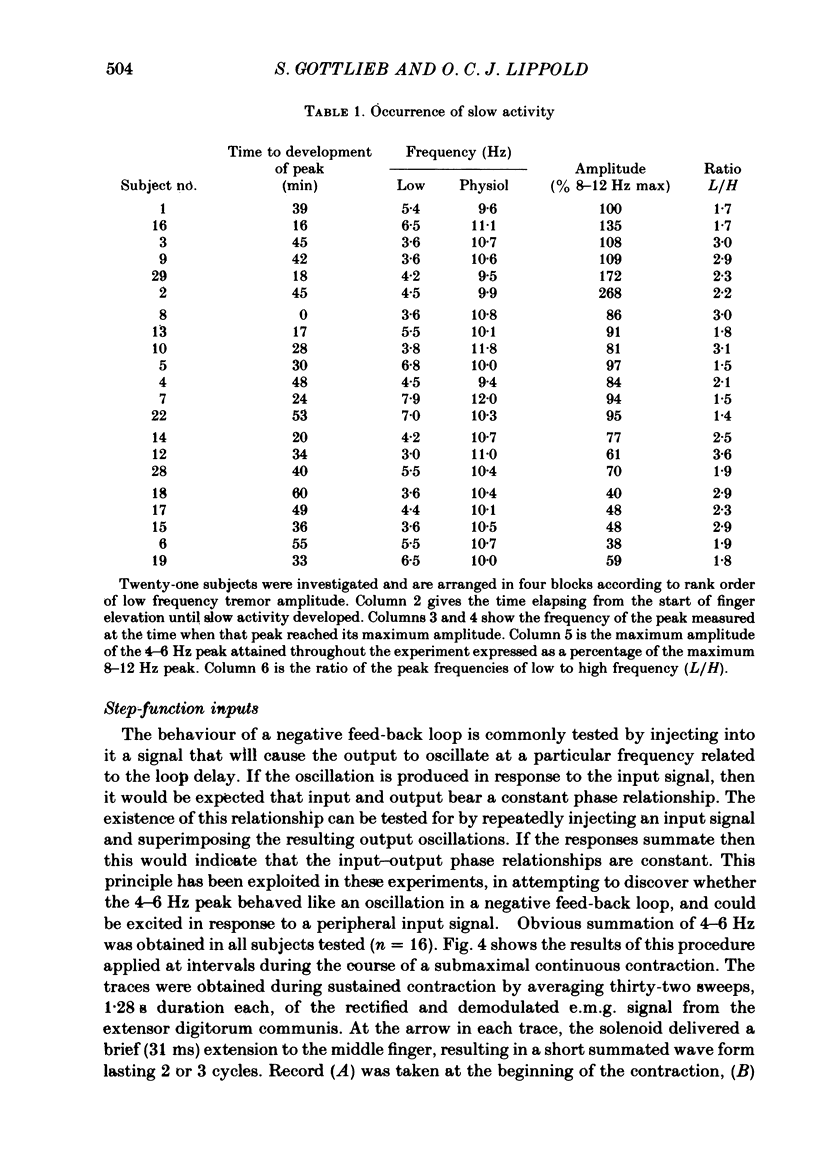
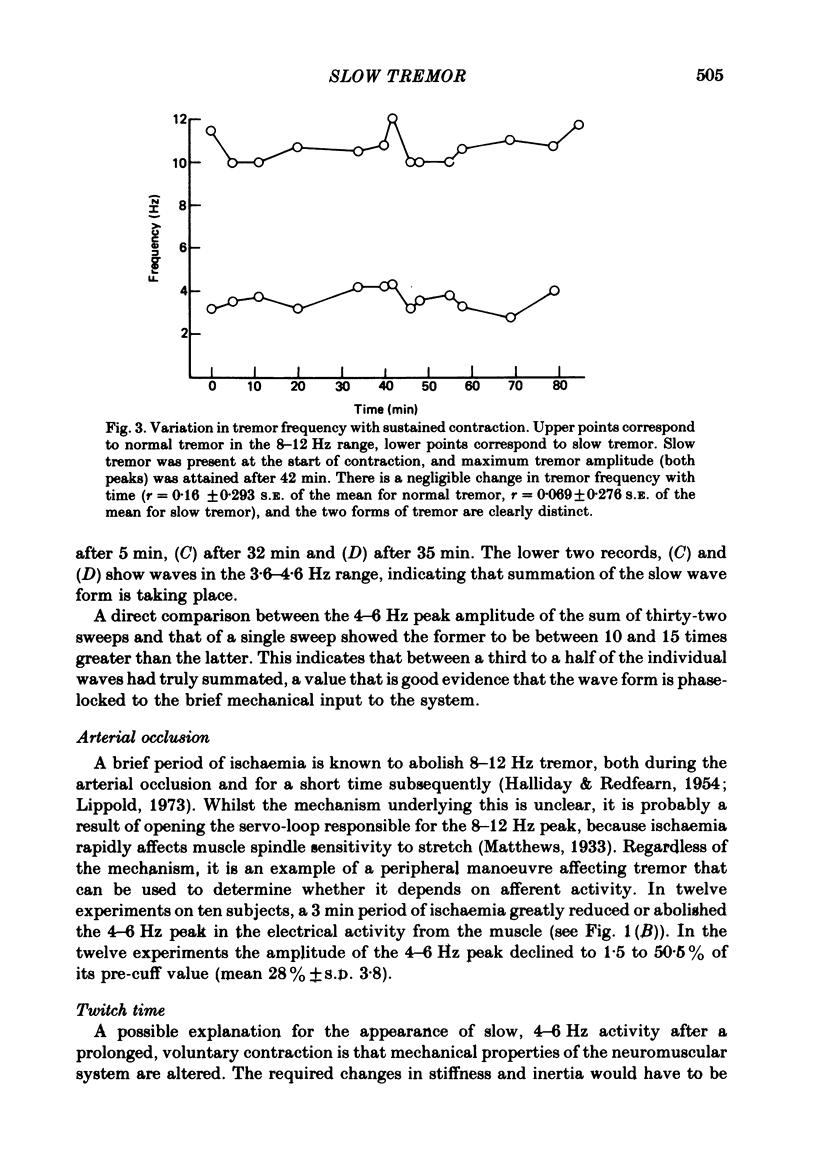
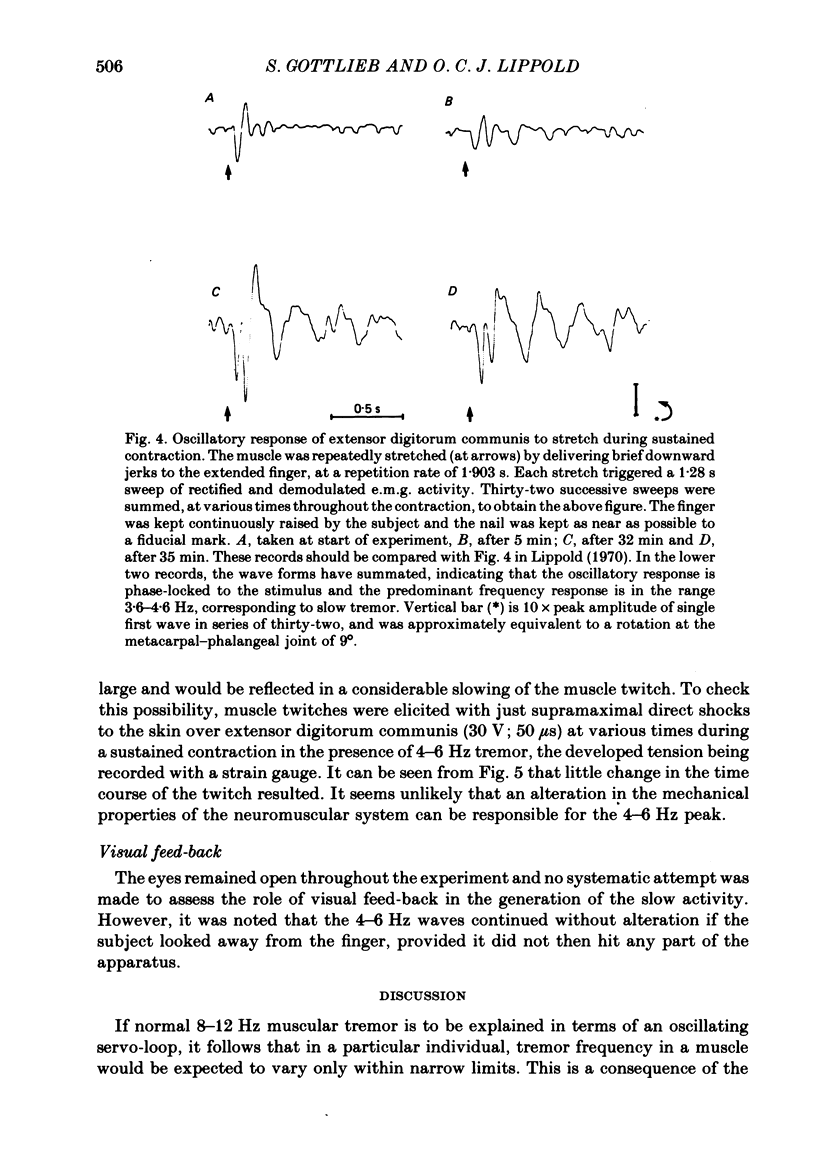
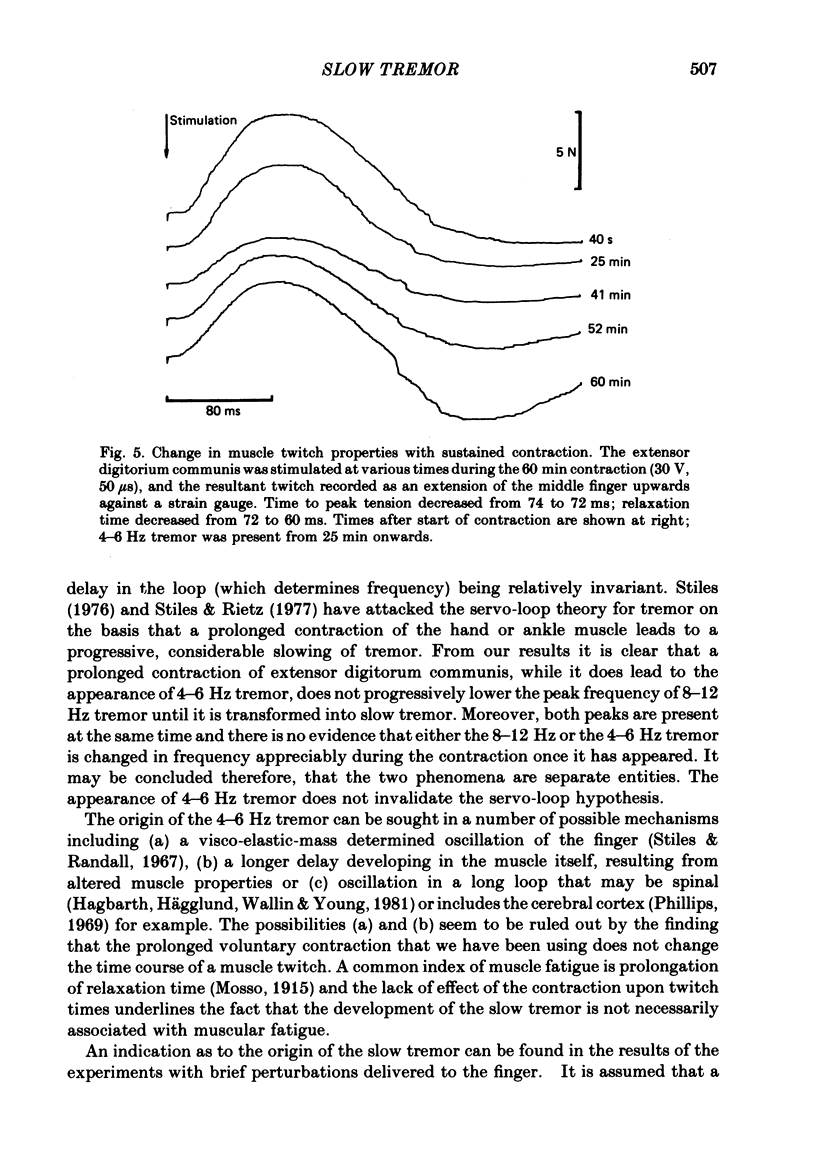
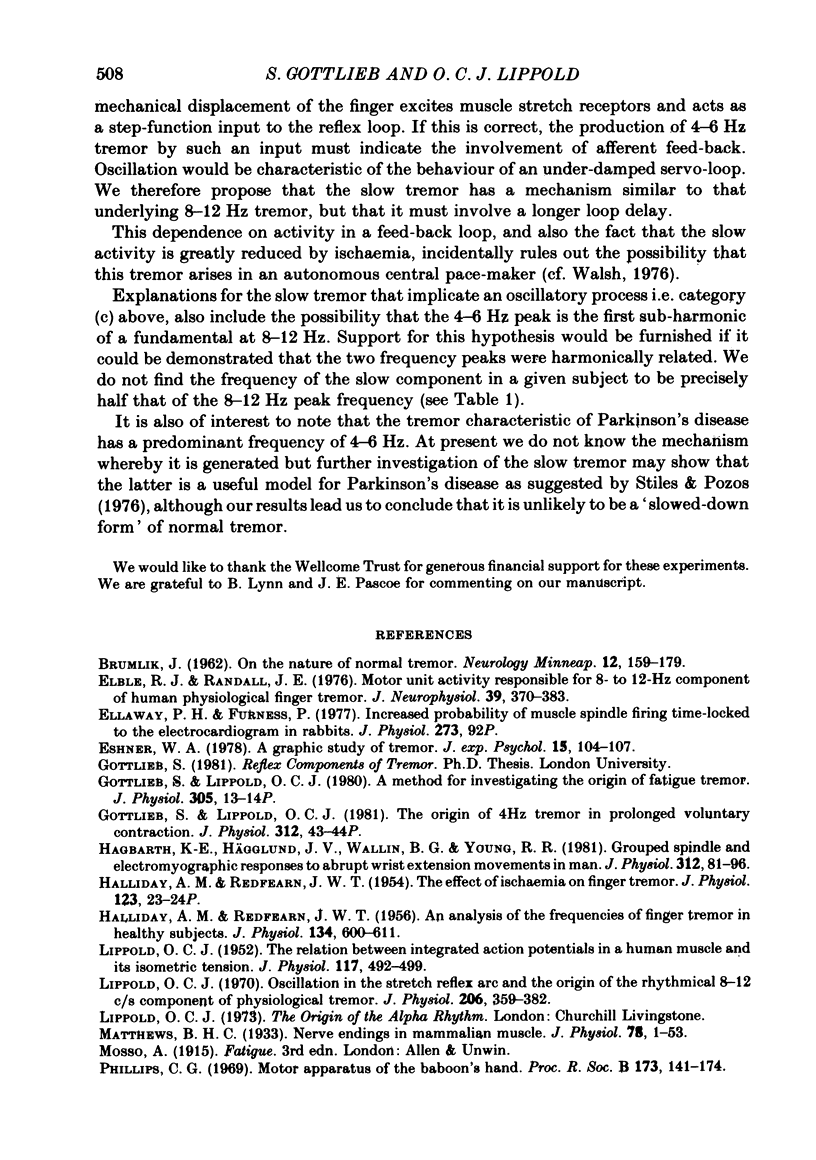
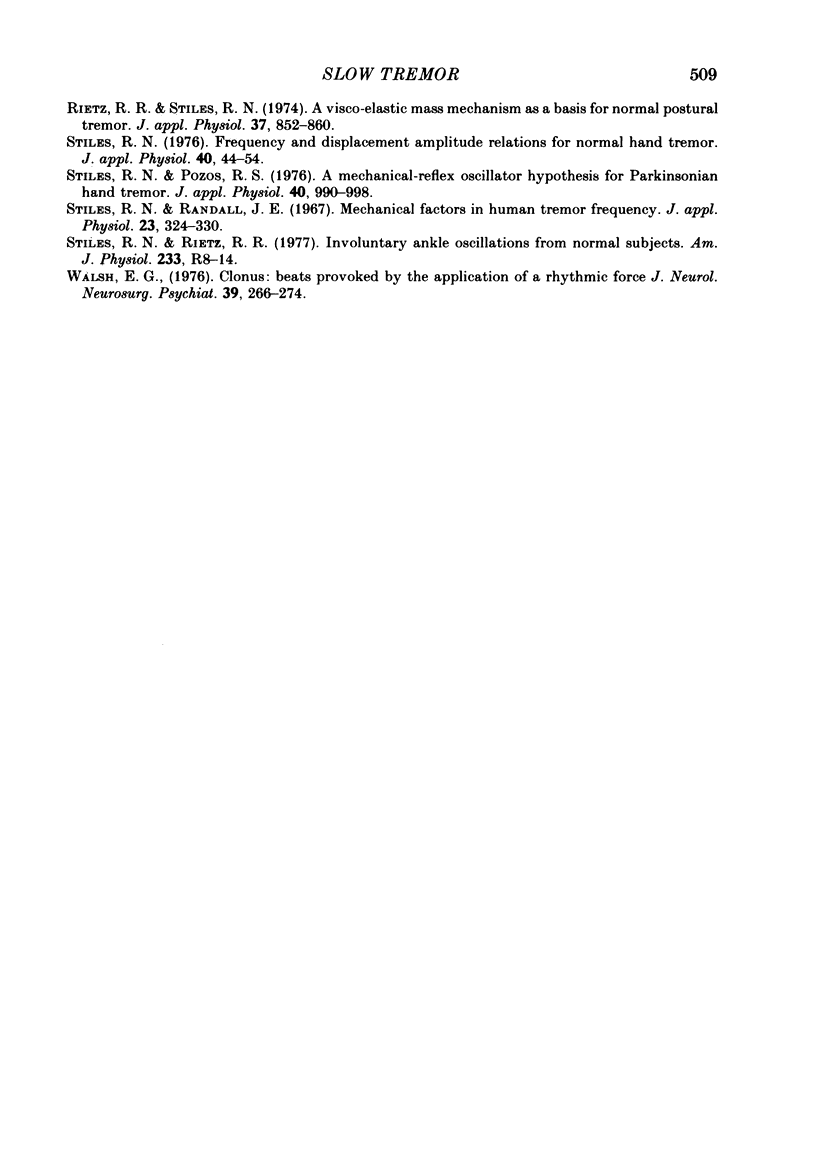
Selected References
These references are in PubMed. This may not be the complete list of references from this article.
- BRUMLIK J. On the nature of normal tremor. Neurology. 1962 Mar;12:159–179. doi: 10.1212/wnl.12.3.159. [DOI] [PubMed] [Google Scholar]
- Elble R. J., Randall J. E. Motor-unit activity responsible for 8- to 12-Hz component of human physiological finger tremor. J Neurophysiol. 1976 Mar;39(2):370–383. doi: 10.1152/jn.1976.39.2.370. [DOI] [PubMed] [Google Scholar]
- Ellaway P. H., Furness P. Increased probability of muscle spindle firing time-locked to the electrocardiogram in rabbits [proceedings]. J Physiol. 1977 Dec;273(2):92P–92P. [PubMed] [Google Scholar]
- HALLIDAY A. M., REDFEARN J. W. An analysis of the frequencies of finger tremor in healthy subjects. J Physiol. 1956 Dec 28;134(3):600–611. doi: 10.1113/jphysiol.1956.sp005668. [DOI] [PMC free article] [PubMed] [Google Scholar]
- HALLIDAY A. M., REDFEARN J. W. The effect of ischaemia on finger tremor. J Physiol. 1954 Feb 26;123(2):23–4P. [PubMed] [Google Scholar]
- Hagbarth K. E., Hägglund J. V., Wallin E. U., Young R. R. Grouped spindle and electromyographic responses to abrupt wrist extension movements in man. J Physiol. 1981 Mar;312:81–96. doi: 10.1113/jphysiol.1981.sp013617. [DOI] [PMC free article] [PubMed] [Google Scholar]
- LIPPOLD O. C. J. The relation between integrated action potentials in a human muscle and its isometric tension. J Physiol. 1952 Aug;117(4):492–499. doi: 10.1113/jphysiol.1952.sp004763. [DOI] [PMC free article] [PubMed] [Google Scholar]
- Lippold O. C. Oscillation in the stretch reflex arc and the origin of the rhythmical, 8-12 C-S component of physiological tremor. J Physiol. 1970 Feb;206(2):359–382. doi: 10.1113/jphysiol.1970.sp009018. [DOI] [PMC free article] [PubMed] [Google Scholar]
- Matthews B. H. Nerve endings in mammalian muscle. J Physiol. 1933 Apr 13;78(1):1–53. doi: 10.1113/jphysiol.1933.sp002984. [DOI] [PMC free article] [PubMed] [Google Scholar]
- Phillips C. G. The Ferrier lecture, 1968. Motor apparatus of the baboon's hand. Proc R Soc Lond B Biol Sci. 1969 May 20;173(1031):141–174. doi: 10.1098/rspb.1969.0044. [DOI] [PubMed] [Google Scholar]
- Rietz R. R., Stiles R. N. A viscoelastic-mass mechanism as a basis for normal postural tremor. J Appl Physiol. 1974 Dec;37(6):852–860. doi: 10.1152/jappl.1974.37.6.852. [DOI] [PubMed] [Google Scholar]
- Stiles R. N. Frequency and displacement amplitude relations for normal hand tremor. J Appl Physiol. 1976 Jan;40(1):44–54. doi: 10.1152/jappl.1976.40.1.44. [DOI] [PubMed] [Google Scholar]
- Stiles R. N., Pozos R. S. A mechanical-reflex oscillator hypothesis for parkinsonian hand tremor. J Appl Physiol. 1976 Jun;40(6):990–998. doi: 10.1152/jappl.1976.40.6.990. [DOI] [PubMed] [Google Scholar]
- Stiles R. N., Randall J. E. Mechanical factors in human tremor frequency. J Appl Physiol. 1967 Sep;23(3):324–330. doi: 10.1152/jappl.1967.23.3.324. [DOI] [PubMed] [Google Scholar]
- Stiles R. N., Rietz R. R. Involuntary ankle oscillations from normal subjects. Am J Physiol. 1977 Jul;233(1):R8–14. doi: 10.1152/ajpregu.1977.233.1.R8. [DOI] [PubMed] [Google Scholar]
- Walsh E. G. Clonus: beats provoked by the application of a rhythmic force. J Neurol Neurosurg Psychiatry. 1976 Mar;39(3):266–274. doi: 10.1136/jnnp.39.3.266. [DOI] [PMC free article] [PubMed] [Google Scholar]


